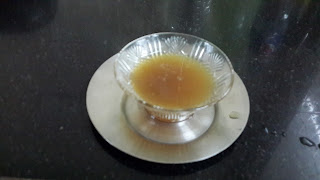Effect of Meditation on Ageing
Living healthy for 400 years:
Fantasy or Reality??
It is said that Sage Chyavan (Chyavan Rishi) lived for 400 years!! It sounds more like a fantasy but was it a reality?
Well, can't vouch for the numbers but I would definitely claim that you will live longer and healthier life if you follow guidelines of yoga and meditate regularly.
According to a one study conducted at University of California-Davis, people showed higher levels of an enzyme associated with longevity after a three-month stay at a meditation retreat.
Of course it was a preliminary clinical trial and it didn’t show that meditation actually extends life, but the findings suggest a possible means by which it could.
Researcher Tonya Jacobs and her team made a comparative study between 30 participants practicing meditation with another group (Controls) not practicing meditation at a meditation retreat held at the retreat Center in Colorado.
Participants meditated six hours per day for three months. Their meditation centered on mindfulness — for instance, focusing solely on breathing, in the moment — and on loving kindness and enhancing compassion towards others.
After the three-month intervention, researchers found amazing things;
One, that the Meditators had on an average about 30% more activity of the enzyme telomerase than the controls did.
Telomerase?? What is it?
Telomerase is responsible for repairing telomeres, the structures located on the ends chromosomes. Telomeres work as a locking system and prevent the chromosome from separating or unscrewed. Every time the cell reproduces, its telomeres become shorter and less effective at protecting the chromosome. According to researchers, shortening of the telomere is a cause of Aging. Cell copying eventually stops when the telomere disintegrate completely.
Second, there was a significant change in people’s (meditator group) Psychological well-being and outlook. People with higher levels of telomerase showed more increase in psychological improvement. In retreat participants who showed no psychological change, telomerase levels were not any higher than in controls. (Researchers were unable to compare telomerase levels in the groups both before and after the retreat for logistical reasons.)
However the study did not show that meditation actually extends life, only that it may increase the activity of an enzyme that is associated with longevity.
So how does Meditation affect the machinery of cellular reproduction? Probably by reducing stress, research suggests. Severe psychological stress — particularly early in life and in the absence of social support — has been linked with poorer health, increasing risk for heart disease, stroke and some cancers. This is likely due to the negative effects of high levels of stress hormones on the brain and body.
So, how do we go about reducing the stress hormones? Meditation here could perhaps play a bigger role. Meditation could perhaps contribute to healthier telomeres thereby reducing the stress hormones and in turn lead to mental well being.
The mind has a big influence on the body. Ayurveda has defined “Health” as physical and mental wellbeing. Modern science has also accepted the role of mental health in physical wellness. Meditation is "THE MASTER KEY TO CONTROL THE MIND" .
So why not start it NOW? Because NOW is the time best time to start with good things .
drsandhyakadam1509@gmail.com
Based on a research article
Based on a research article












